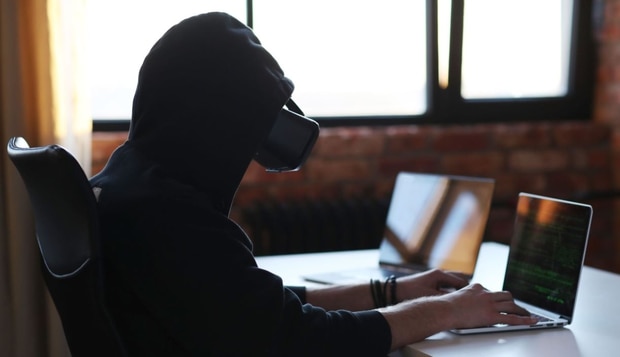The adolescent brain and the deadly side of social media
July 16, 20171.6K views0 comments
The spread of harmful ideas is nothing new.
Teenagers and young adults have always done silly and rather dangerous things because, let’s face it, sometimes it can be a lot of fun. But the advent of social media has brought a new social dynamic to those trying to navigate the challenge of adolescence.
For instance, it’s easier than ever for people to encourage strangers on the other side of the world to participate in so called ‘social media challenges’. Most are harmless but some are increasingly dark and have shocking consequences.
At one end of the extreme are things like the condom challenge where participants drop condoms full of water on their mate’s head. At the other end of the extreme are games which encourage teens to self harm and even suicide.
“Because of the prevalence of social media and because of its widespread adoption, kids are being exposed to so many things” and the adolescent brain is “hugely vulnerable” to the pitfalls of social media, says leading child researcher Dr Kristy Goodwin.
There can be a sense of “peer acceptance” that compels some teens to participate in such online challenges, even if they might be exceedingly risky or harmful, news.com.au reported.
“Social media caters to so many of our basic needs to feel connected and competent,” Dr Goodwin said. “Because we’re humans and we want to feel like we’re connected there’s almost a sense of allegiance. If I emulate what others are doing, I’m fitting in.”
The element of one-upmanship in a bid to reach a bigger audience can also increase the risk.
For instance, the #FireSprayChallenge morphed into the #FireChallenge which involves dousing oneself with a flammable liquid like rubbing alcohol, then lighting your torso or limbs on fire before jumping into a shower or pool.
Even the most inane viral fad like “planking” resulted in the death of 20-year-old Brisbane man Acton Beale who fell to his death after attempting to plank on the seventh-floor balcony of an apartment block. He later won a Darwin Award.
And then there’s the truly horrible side where vulnerable teens are encouraged to do the unthinkable.
Last weekend, Texas father Jorge Gonzalez found his son Isaiah Gonzalez dead in his bedroom. He reportedly live streamed his own suicide as part of an online challenge.
The parents of the 15-year-old boy believe their son took his own life as a result of a deadly internet challenge known as the Blue Whale Challenge – a disturbing game that presents itself online.
The tasks, which include self-mutilation and waking up at odd hours to watch horror movies, ends in suicide.
“I want them to go through their phones, look at their social media,” Mr Gonzales said in a warning to other parents. “If they’re on that challenge already, they can catch that from happening.”
The game is rumoured to be behind unexpected deaths across the globe and reportedly linked to 130 deaths in Russia, the suicide capital of the world.
However because it plays out on the likes of Facebook and Instagram, the reality is hard to prove and some suggest it’s simply an internet hoax invented to frighten parents.
Dr Kristy gives seminars to parents about how to ensure the “digital health” of their children and is often surprised at how little parents are aware of such social media challenges.
“I would say 99 per cent of parents are completely oblivious to these social media challenges that kids are participating in,” she said.
And most of the time such things are taking place at night, when neurologically speaking, teens are most susceptible.
The part of the brain that’s responsible for impulse control is called the prefrontal cortex which isn’t fully developed until age 25.
“The part of the brain that makes logical decisions, that part of the brain that manages impulses, for want of a better word, it’s not online. It’s not developed,” Dr Goodwin said.
“And we know, from a neuroscientific point of view, at night that the prefrontal cortex even though it’s not fully developed, it basically doesn’t work at all.
“The logical part of the brain turns off and instead another part of the brain called the amygdala which is like the emotional centre of the brain, it literally turns on,” she said.
The result is teens are more likely to lack impulse control and engage in risky behaviour at night time.
Dr Goodwin believes the “constant exposure” to the more disturbing elements linked to such challenges, such as self harm, can also takes its toll.
Because of the way algorithms work on social media sites like Facebook, if you’ve looked at a particular hashtag or type of content in the past it will continue push similar content into your feed, further spreading the potentially harmful ideas. She calls it “contagion risk”.
“The social media companies do have a really big social responsibility,” Dr Goodwin said. “In their defence, they are trying where they can.”
For example, if you search the hashtag #BlueWhaleChallenge on Instagram, it comes up with a message offering help.
Users can either click ‘learn more’ to be taken to a page with advice and links to helpline organisations, or simply carry on to the posts.
“Some people might argue they’re token gestures,” Dr Goodwin says but in the age of live streaming on virtually every social media platform it is practically impossible to prevent the spread of harmful content.
Dr Goodwin certainly doesn’t advocate for “digital abstinence” but says parents need to be aware of the online culture that underpins social media challenges and talk to the kids about what they see online.

